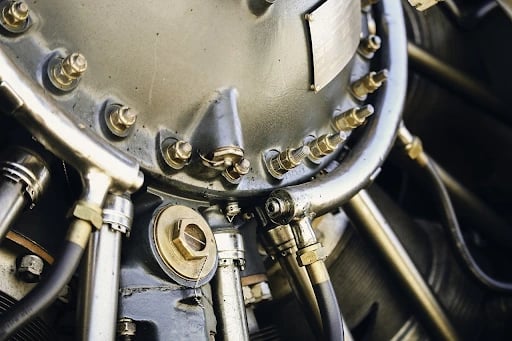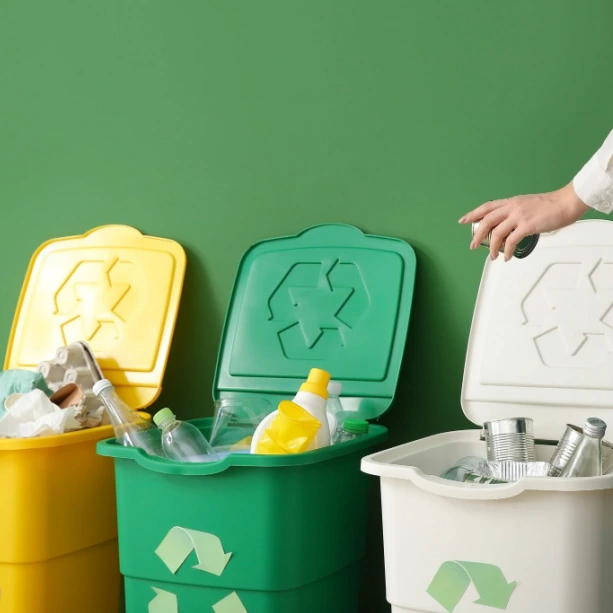When it comes to discussions of sustainability and being environmentally conscious, without fail, people think of waste. Waste disposal isn’t just an issue on a personal level; in fact, most waste is contributed on an industry level. Within manufacturing specifically, large quantities of scrap are generated on a daily basis. But that doesn’t mean the amount of waste generated can’t be reduced through a robust waste prevention strategy.
 The Importance of Waste Prevention in Manufacturing
The Importance of Waste Prevention in Manufacturing
Within the manufacturing process, there is always going to be scrap that goes unused. Whether the material in question is damaged, ill-suited for the specific project, or compromised due to a production error, the product is the same – the material is passed over and eventually disposed of. While employees might overlook this waste, a well-attuned operator will not.
Waste costs companies both time and money. Operators must pay for the disposal of unusable scrap, and they must pay to replenish their supply if it becomes damaged. Additionally, waste produced from production error results in reduced output and lost profits; in extreme cases, employees may have to work overtime to fulfill an order all over again, creating tension within the company.
Working to prevent unnecessary waste is beneficial from both an environmental standpoint and an operational standpoint. By committing to a waste management plan, operators can be assured that all material is being utilized to the fullest possible extent.
Increase Your ROI by Investing in AirFinder Everywhere
- Loss Prevention. Reduce the amount of loss that occurs during the supply chain process
- Location Coverage. AirFinder Everywhere uses a combination of GPS, Cellular, and WiFi to determine location everywhere
- Security Alerts. Know when a delay in shipment has occurred so the problem can be addressed immediately.
Minimizing Waste with a Waste Management Plan
The steps to formulating and pursuing a waste management plan are as follows:
- Identify current waste production. How much waste is being produced by each division of the facility? What types of waste are most and least common? How much does that waste cost the company?
- Set a goal for waste reduction. What kinds of waste do you want to reduce? How much money do you want to save by reducing waste?
- Implement a plan. Who will monitor progress toward this goal? How will progress be approached and measured? What steps need to be taken to reach this goal?
The challenge lies in the third step. Many companies stumble over what an effective waste management plan looks like and how they can best monitor their waste and progress toward their waste prevention goals. Asset tracking can help.
How an RTLS Solution Can Help You Reduce Waste
By tracking scrap and other waste, operators can receive reliable data on waste sources and disposal patterns. This can help companies meet their waste management goals in a few ways.
Identify spikes in waste.
Through asset tracking, operators can identify when more scrap is being produced than usual. As this usually indicates a production error, quick action can be taken to remedy the error before it results in even more extraneous scrap.
Keep track of preserved scrap.
Sometimes, it makes sense to keep scrap for later use. However, it’s easy for preserved scrap to be forgotten, which often leads to it being lost and eventually disposed of instead of used. An RTLS system can help track what waste is being deliberately preserved so that it doesn’t make its way to the disposal.
Monitor waste types.
Not all waste is created equal. Some can go on to be used for another purpose or even simply recycled rather than thrown away. Alternative forms of disposal can also help companies achieve their waste reduction goals. With an RTLS system, operators can keep track of different disposal zones and ensure waste is being disposed of sustainably where possible.
Minimize Waste with Asset Tracking
Are you ready to commit to a waste prevention plan for your company? Link Labs can help you find an asset tracking solution that can help you meet your goals without the headache and without breaking the budget. To learn more about our solutions, book a demo today.


.webp?width=1000&name=Sustainability_banner%20(1).webp)


